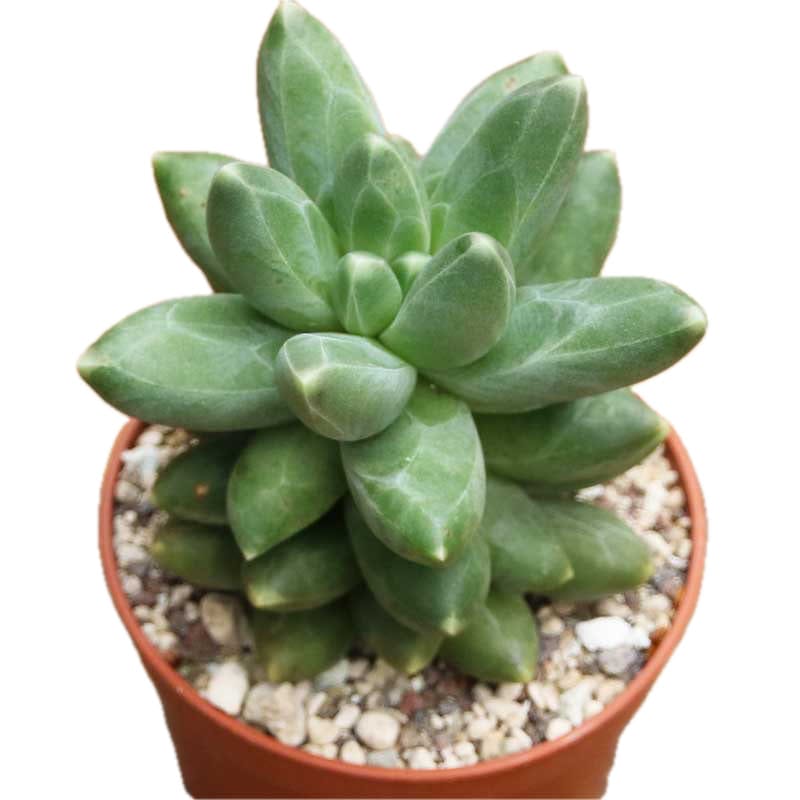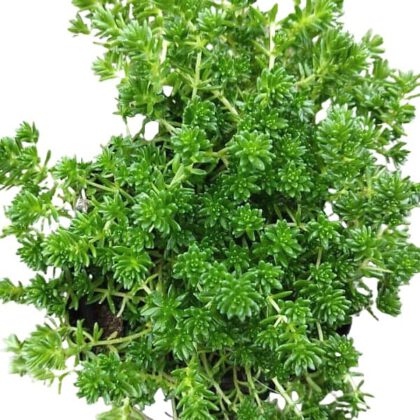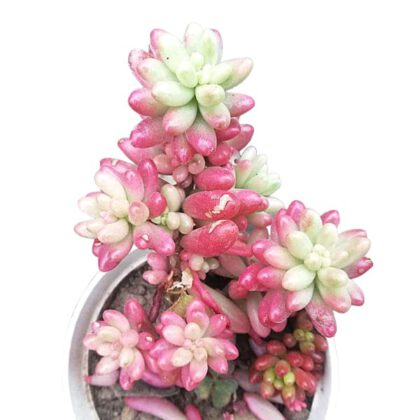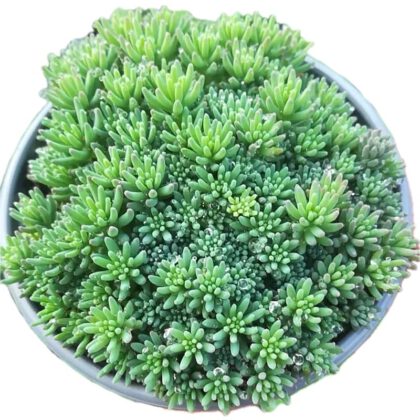Plant Care
- Light: Pachyphytum compactum thrives in bright, indirect light but can tolerate some direct sunlight. Ideally, provide at least 4-6 hours of sunlight daily. Too much direct sun can cause leaf burn, while too little light can lead to leggy growth.
- Watering: Water deeply but infrequently, allowing the soil to dry out completely between waterings. Overwatering can lead to root rot, so it’s important to follow a “soak and dry” method, especially during the growing season.
- Soil: Use a well-draining succulent or cactus potting mix. Adding extra perlite or sand can improve drainage and prevent soil from becoming waterlogged.
- Temperature: This succulent prefers warm temperatures between 65-80°F (18-27°C). It is not frost-tolerant and should be protected from temperatures below 40°F (4°C).
- Humidity: Pachyphytum compactum prefers low humidity levels. High humidity can lead to fungal issues, so ensure good air circulation around the plant.
- Fertilization: Feed with a balanced, diluted liquid fertilizer during the active growing season (spring and summer). Fertilize sparingly, as succulents are not heavy feeders. Avoid fertilizing during the winter months.
- Container: Choose a container with drainage holes to prevent water from accumulating at the bottom. Terracotta pots are ideal as they allow for better air circulation and moisture evaporation.
- Pruning: Minimal pruning is needed. Remove dead or dried leaves from the base of the plant to maintain its appearance and health.
- Propagation: Propagate through leaf cuttings or offsets. Allow the cut ends to callus for a few days before planting them in a well-draining soil mix.
- Pests: Watch for common pests such as mealybugs, aphids, and spider mites. Treat infestations with insecticidal soap or neem oil. Regularly inspect the plant to catch any pest problems early.
- Support: Pachyphytum compactum is a low-growing, compact plant that does not require additional support. Its sturdy structure allows it to remain upright without assistance.






 from Uttarakhand, India
from Uttarakhand, India 